
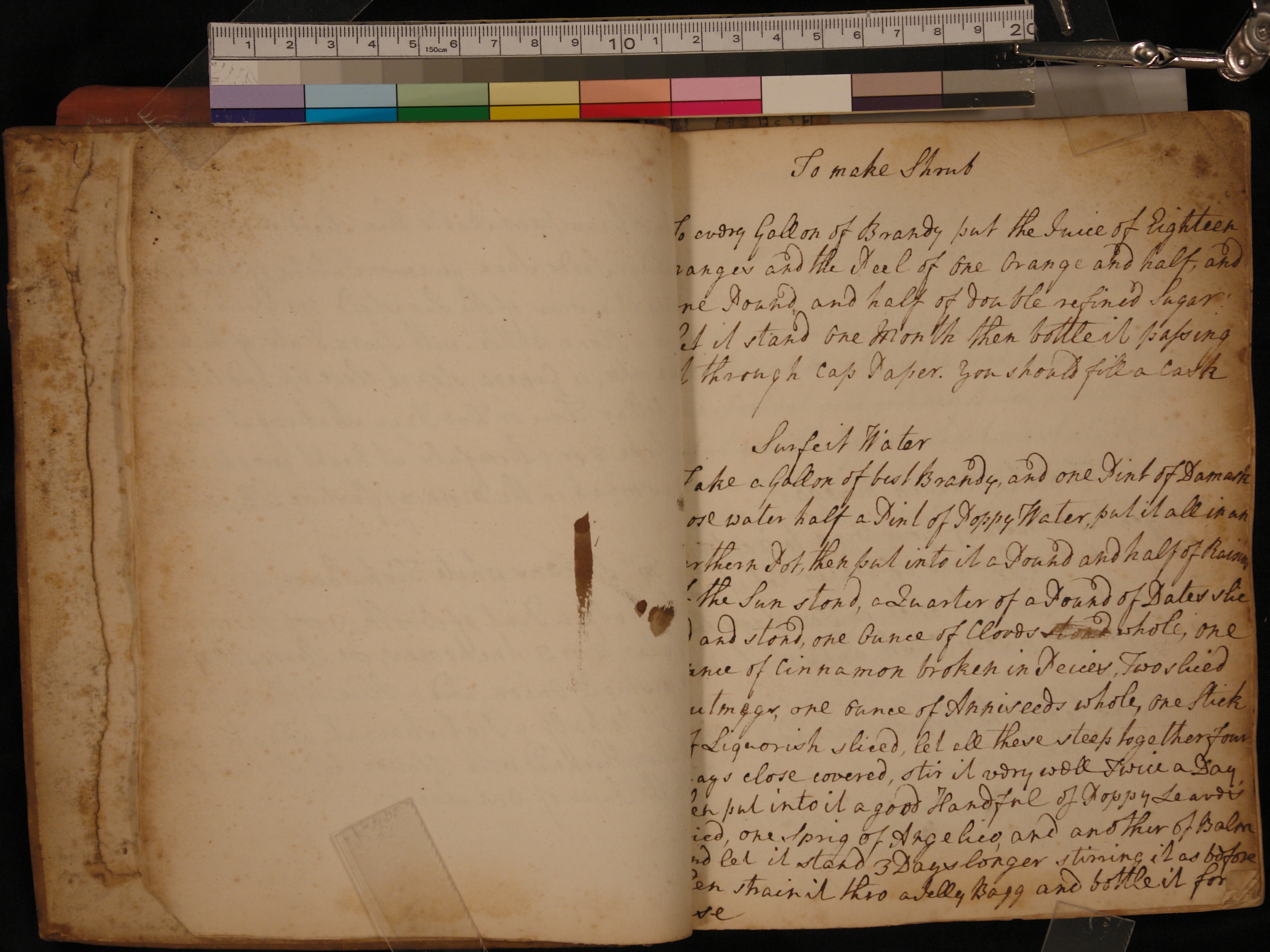
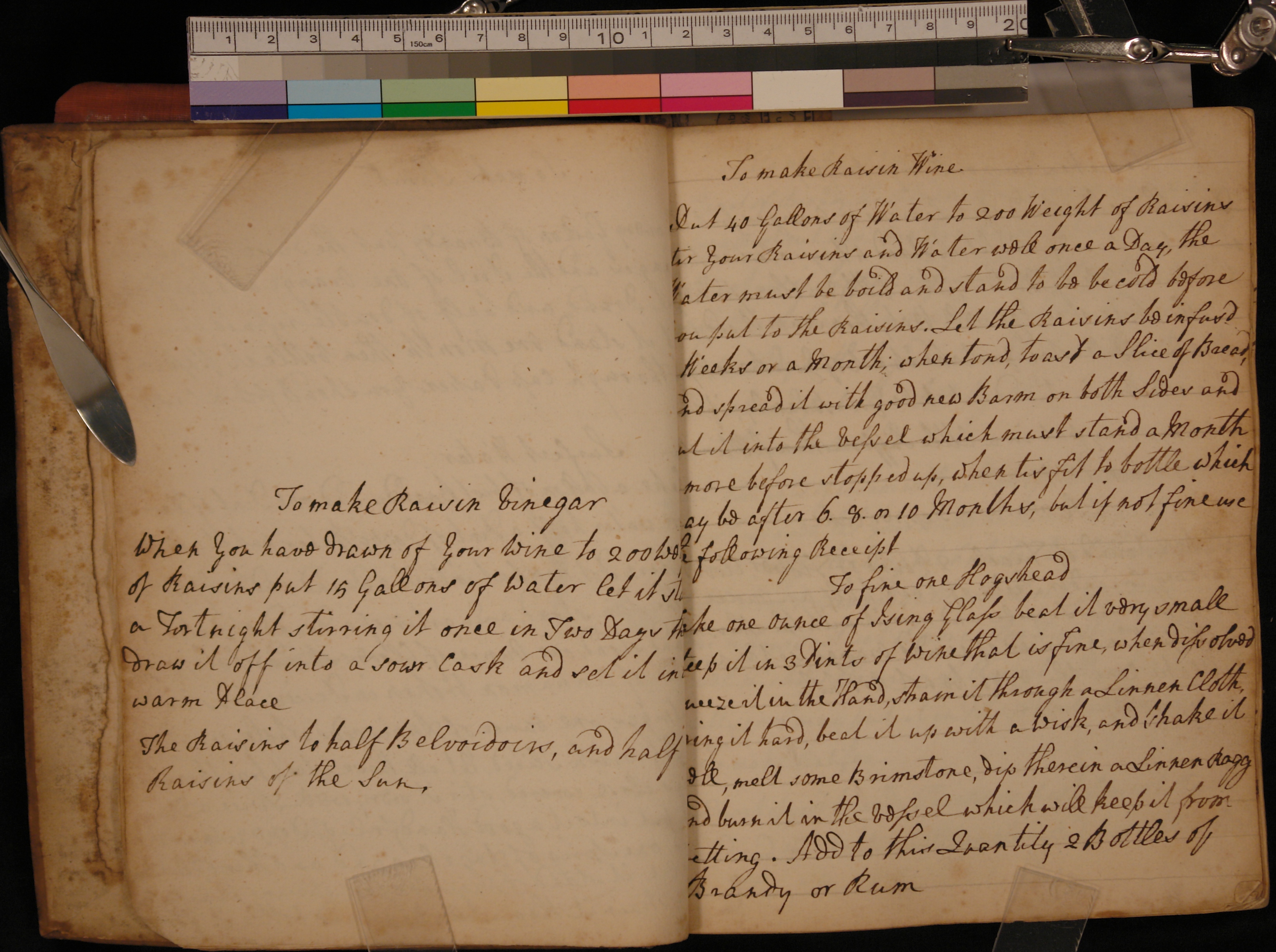
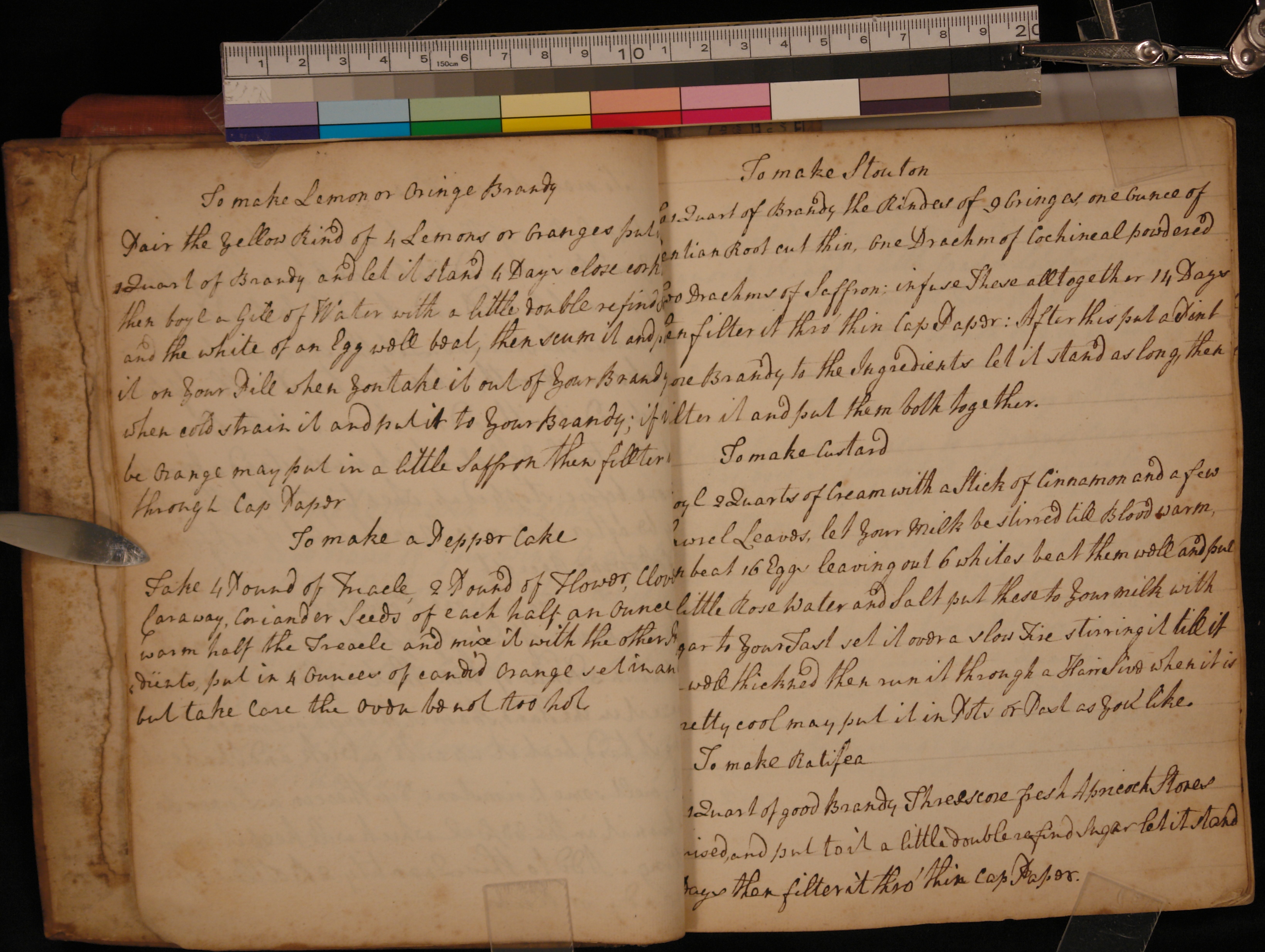
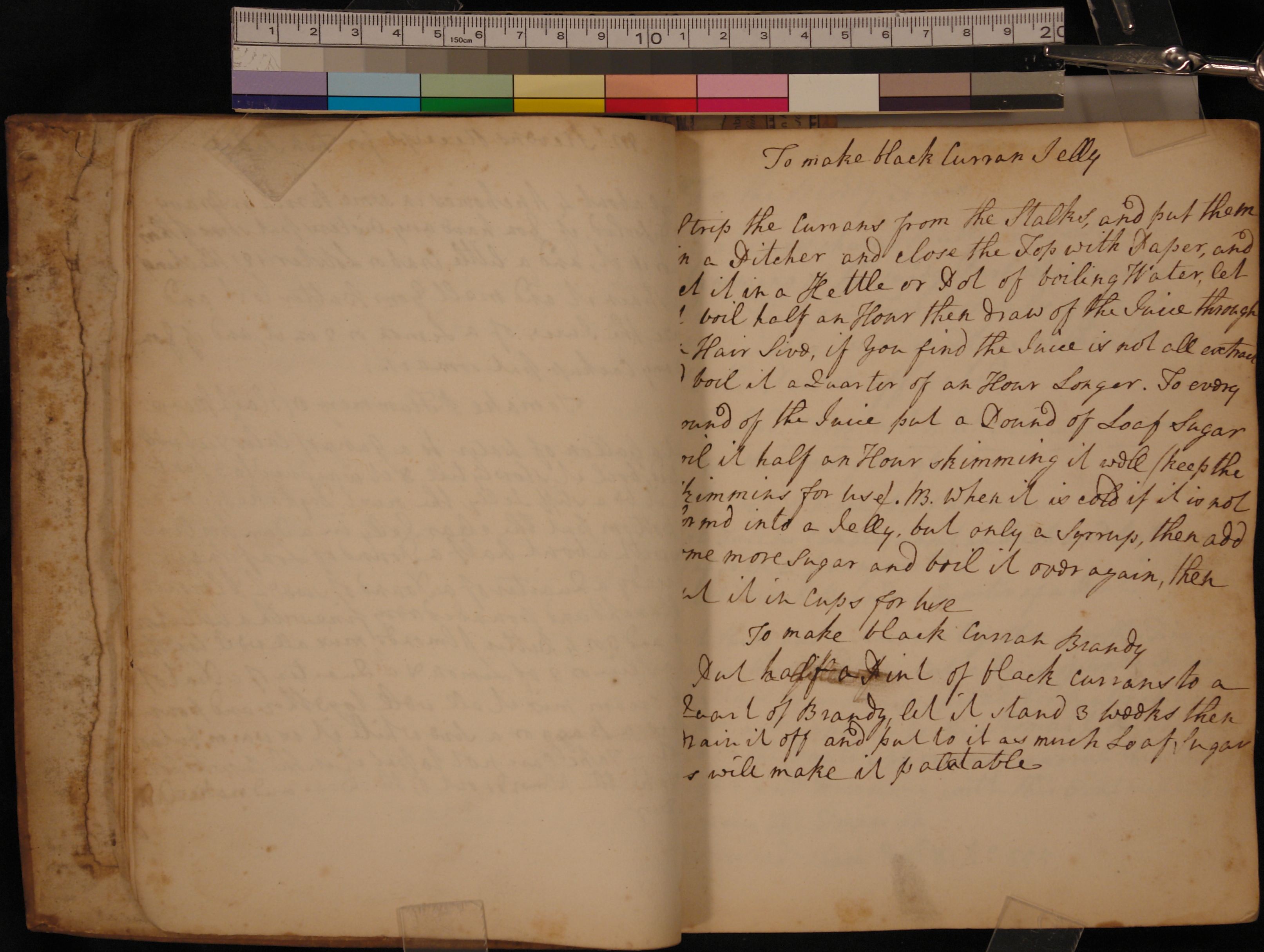
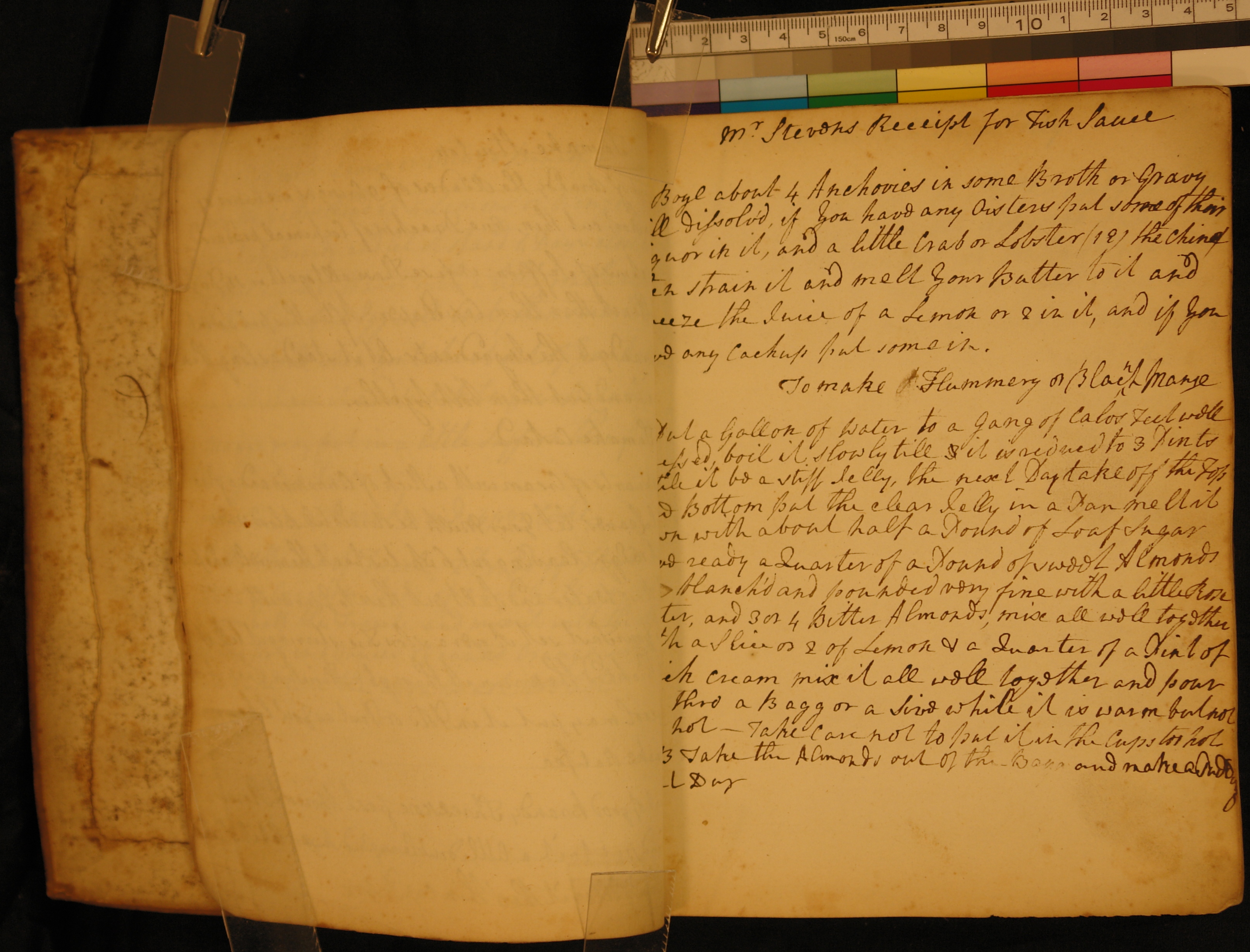
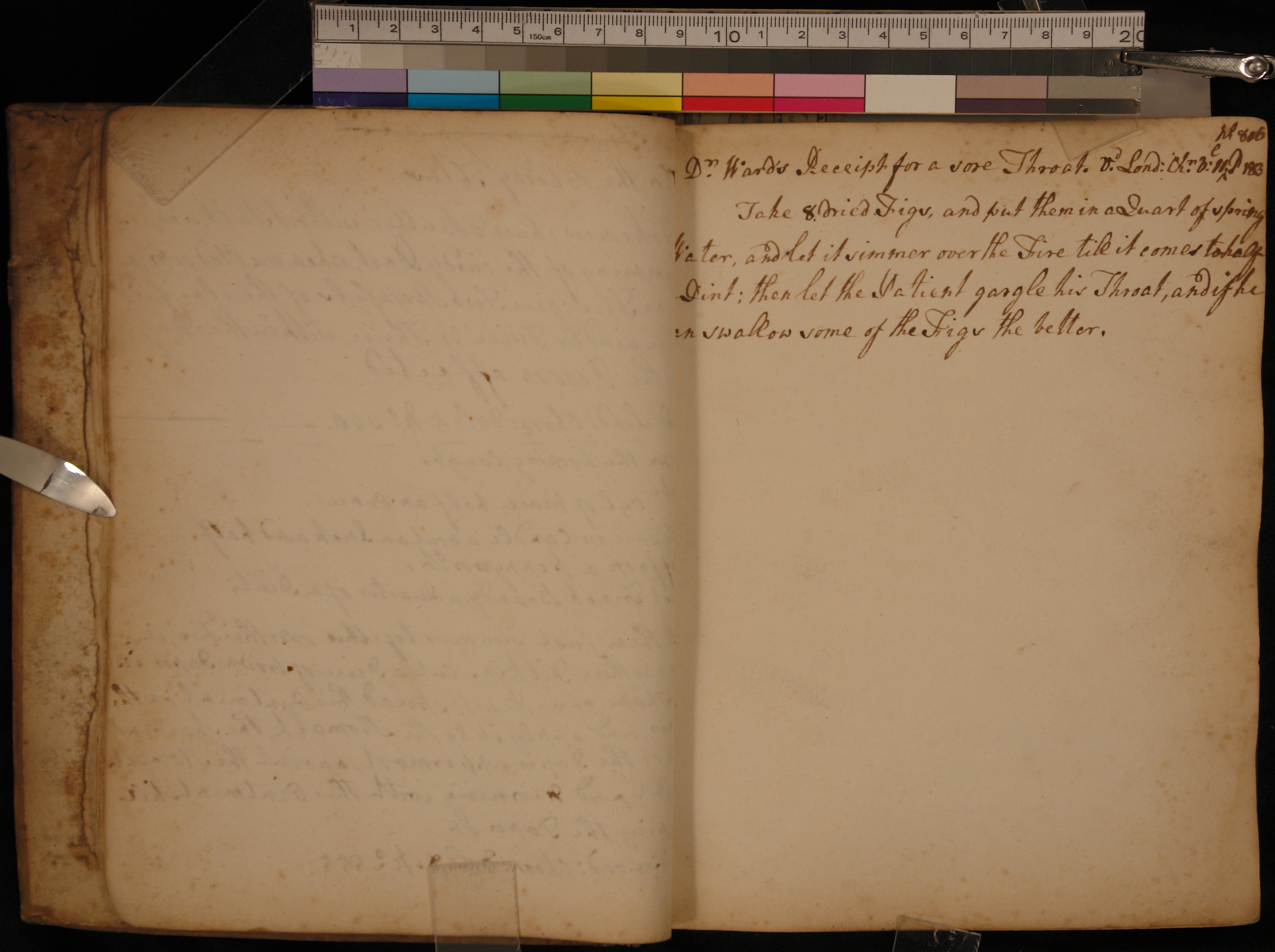
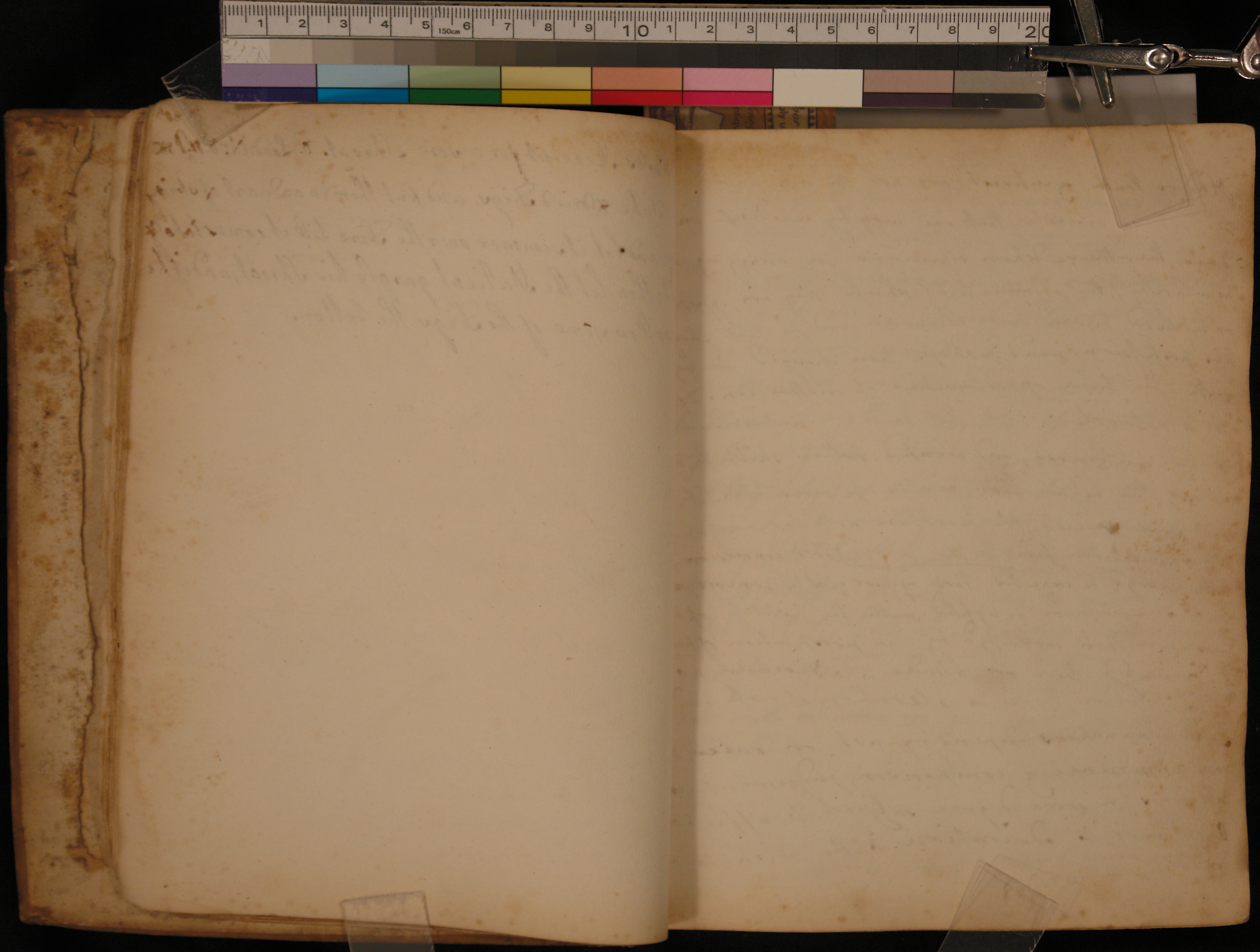
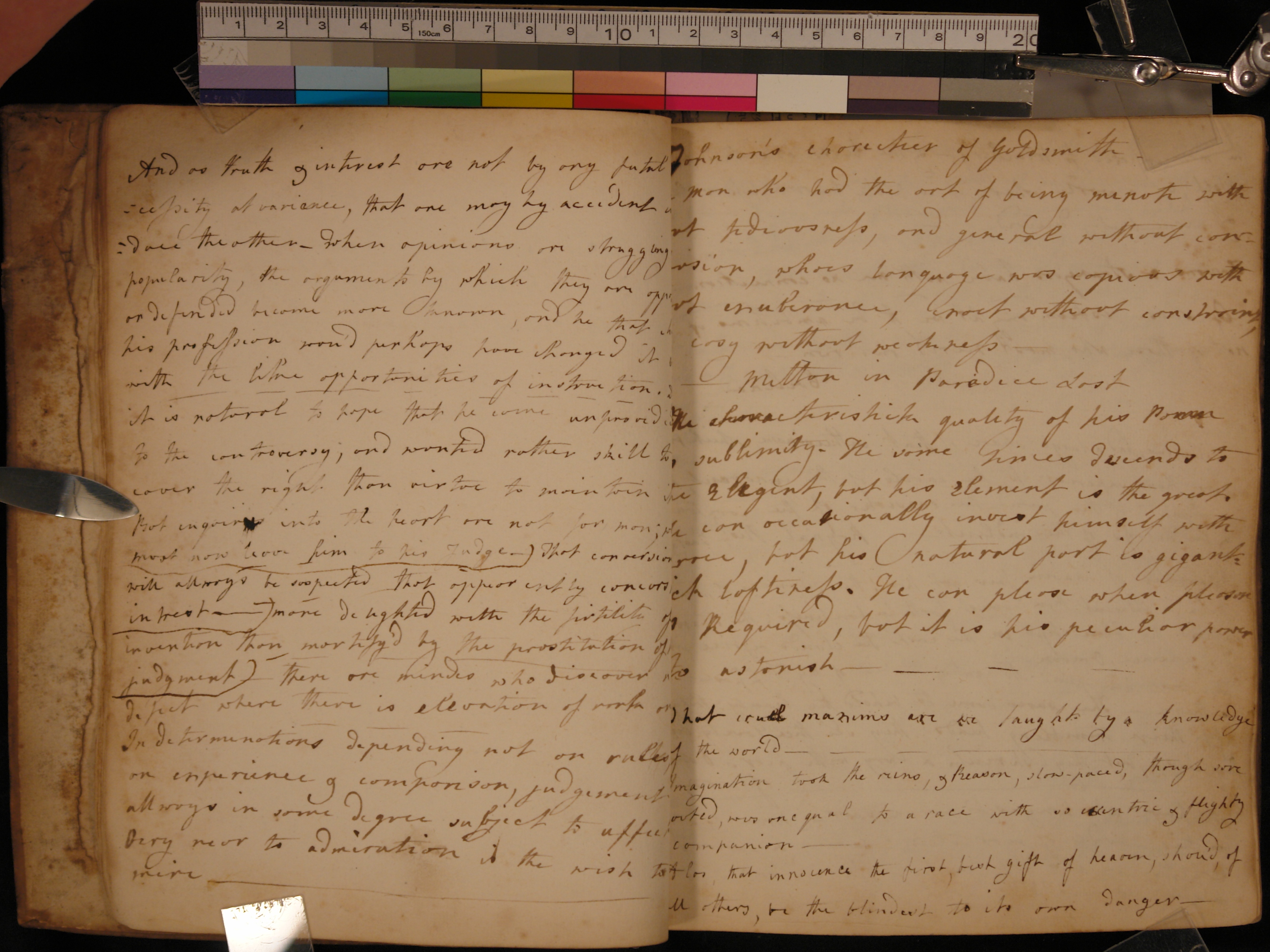
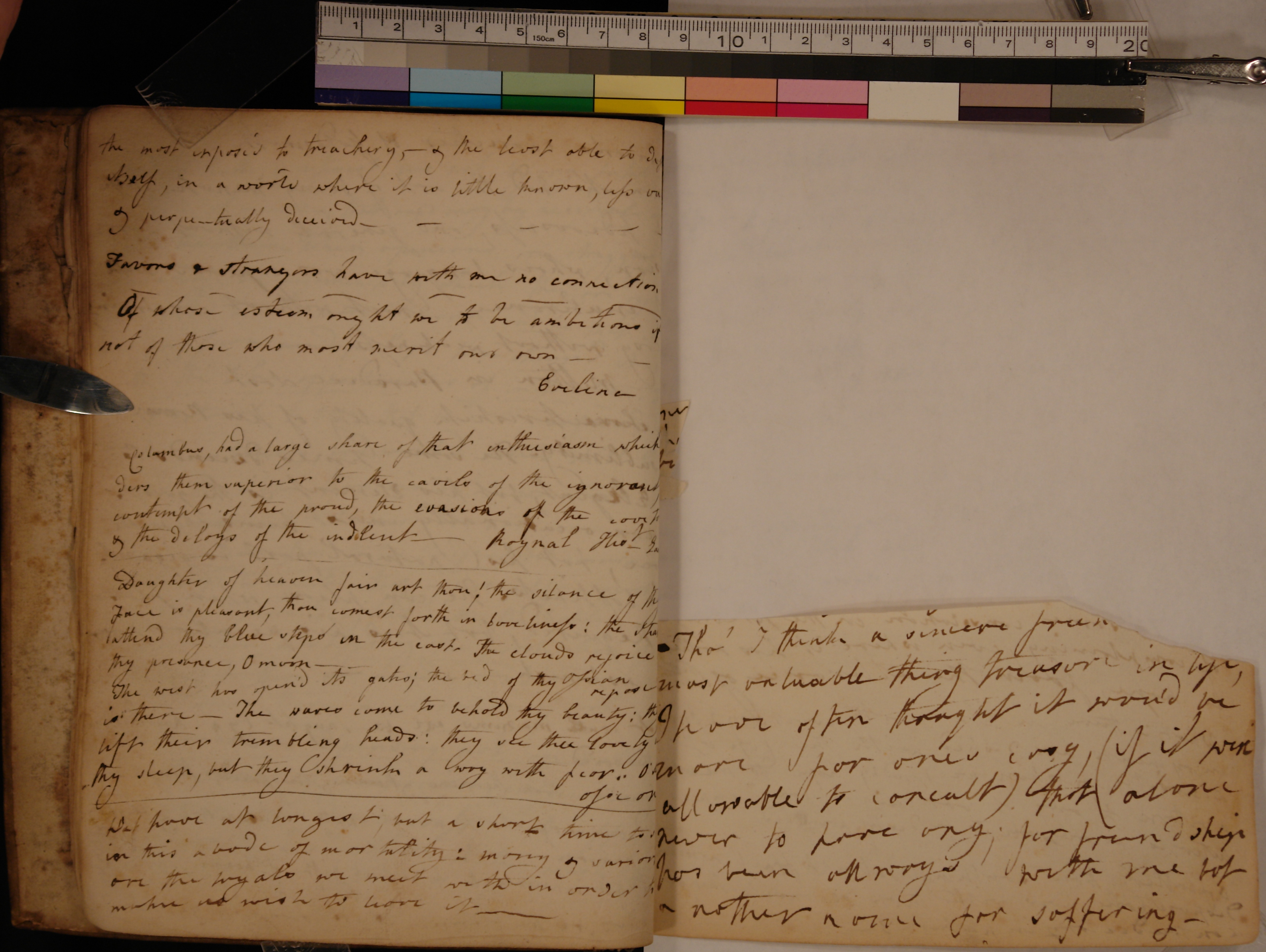
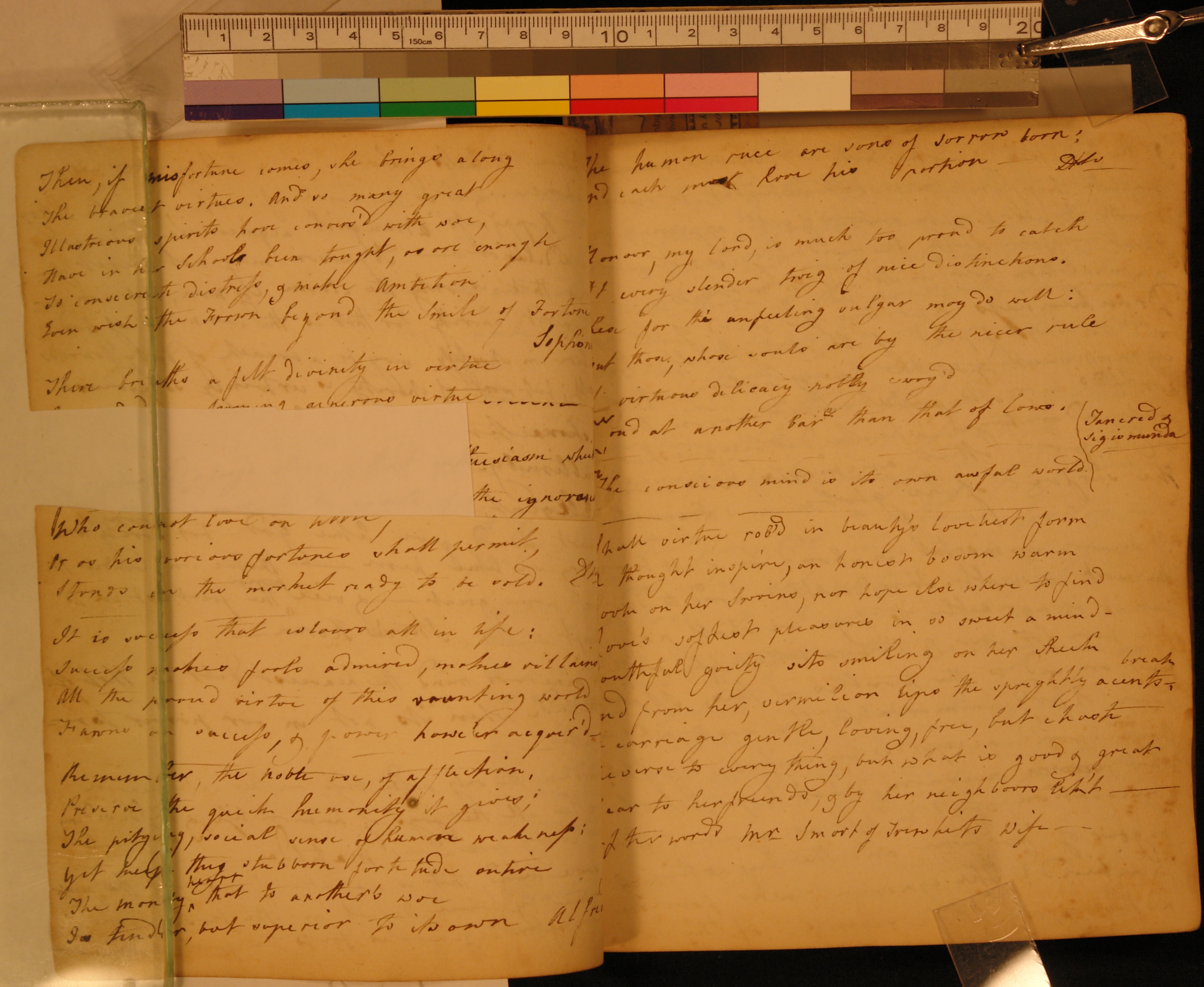
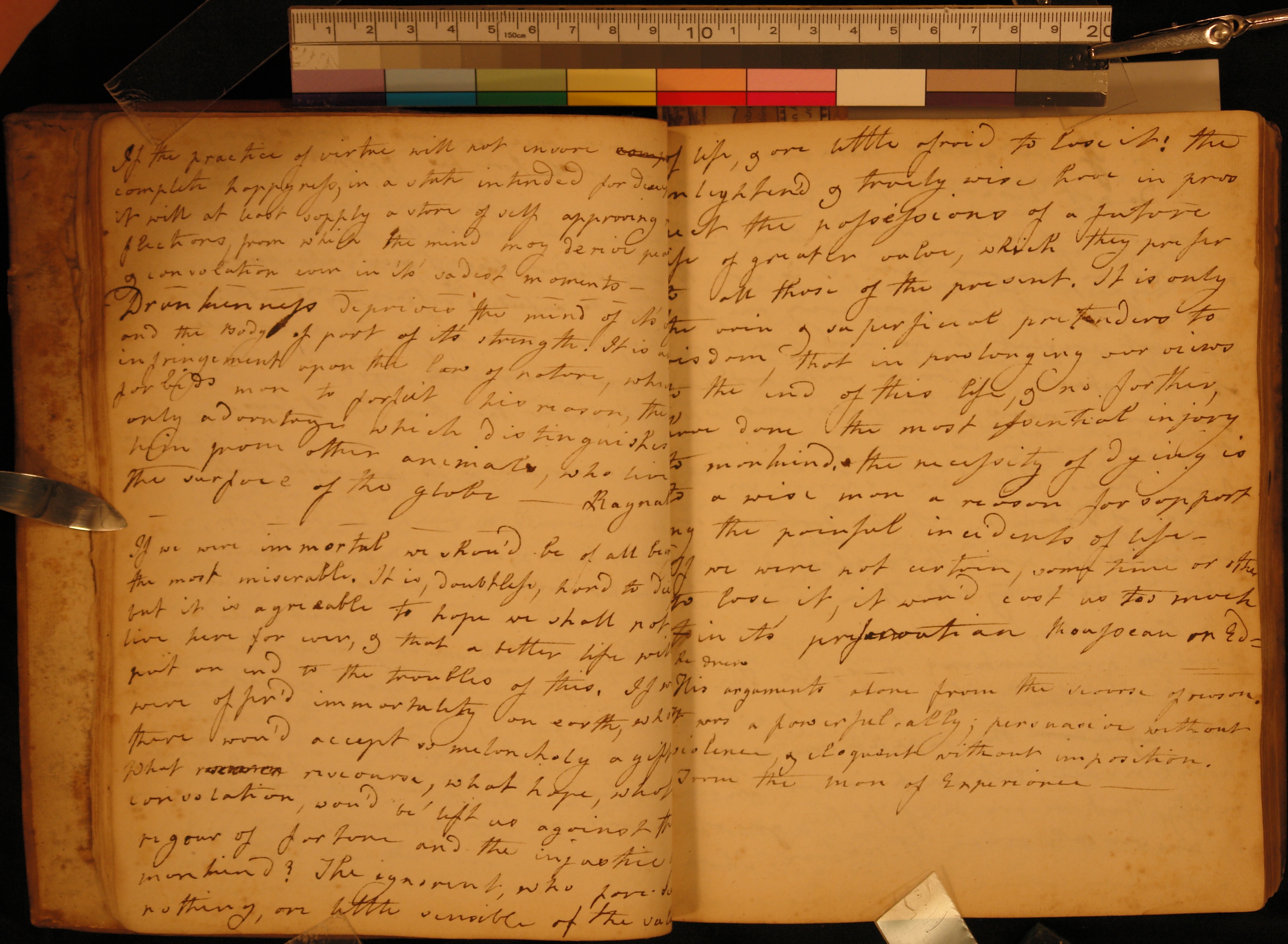
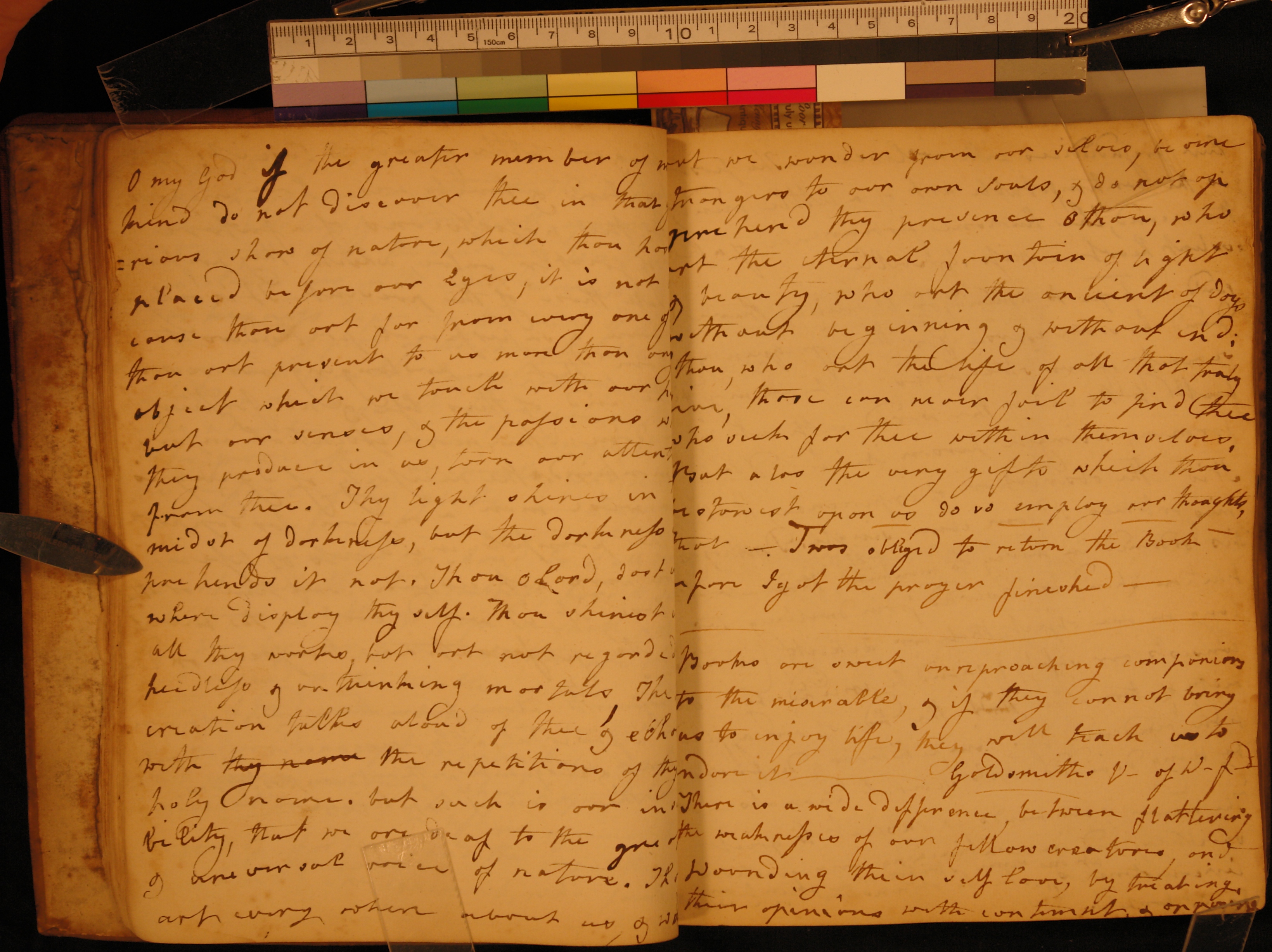
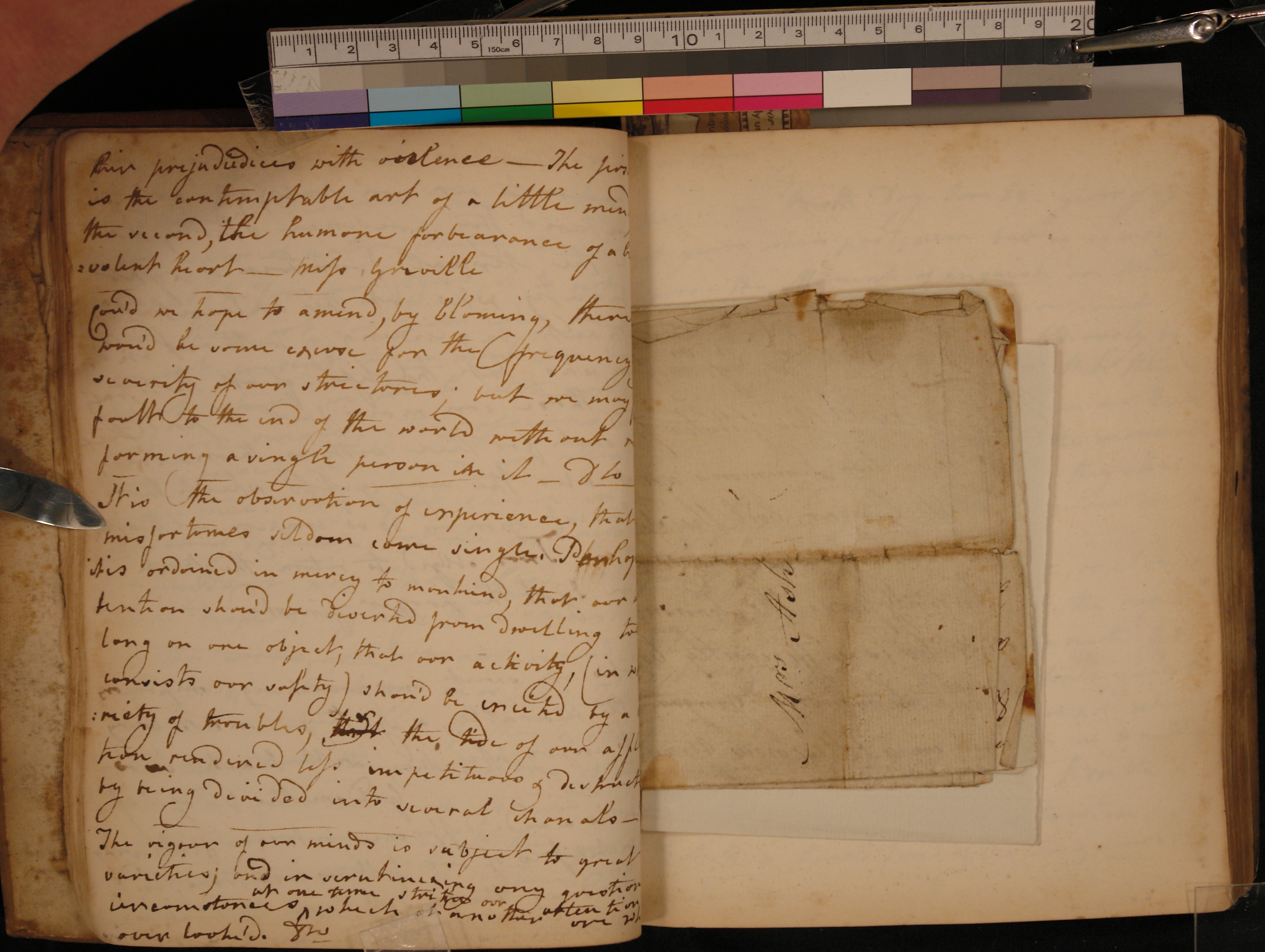

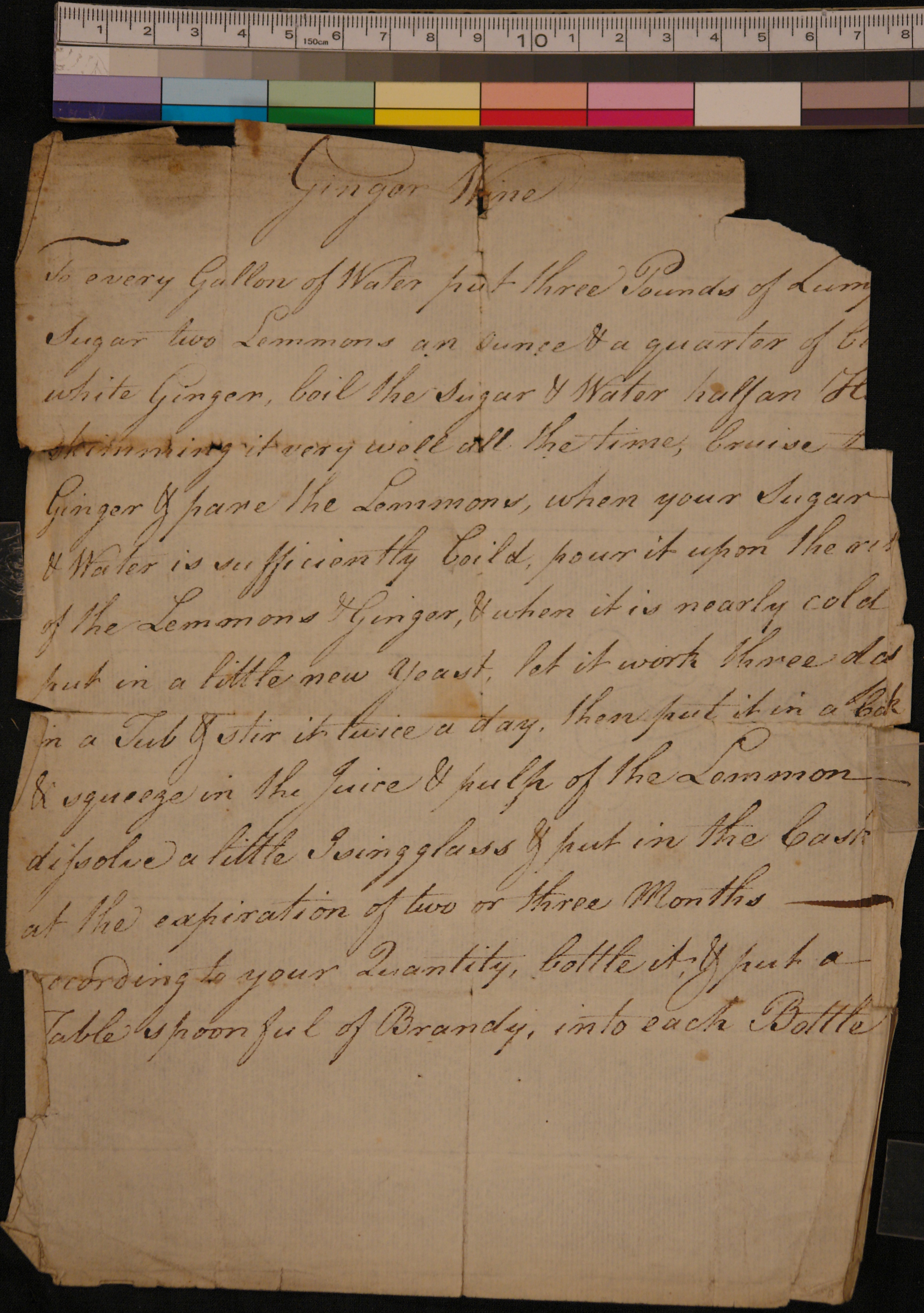
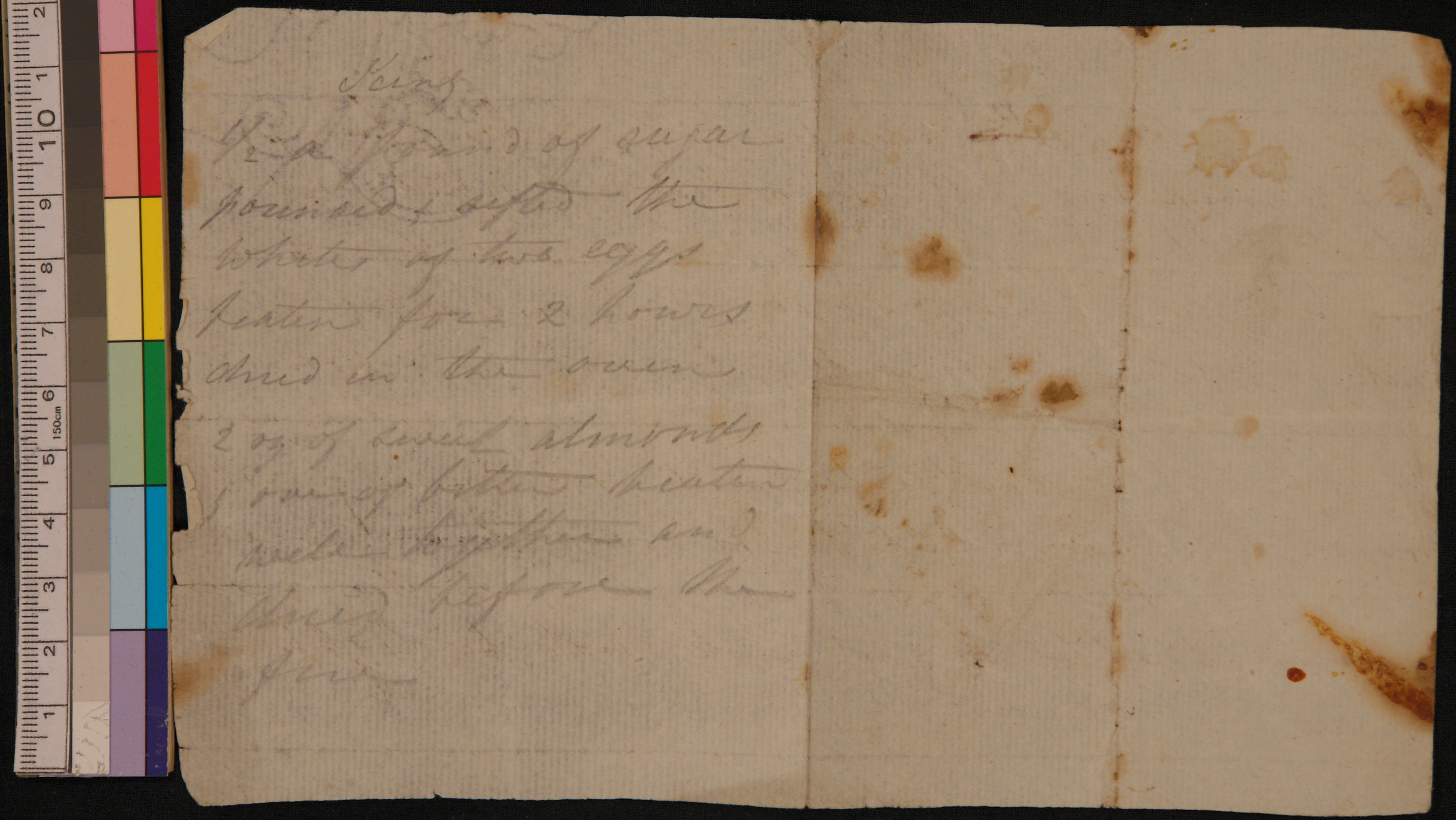
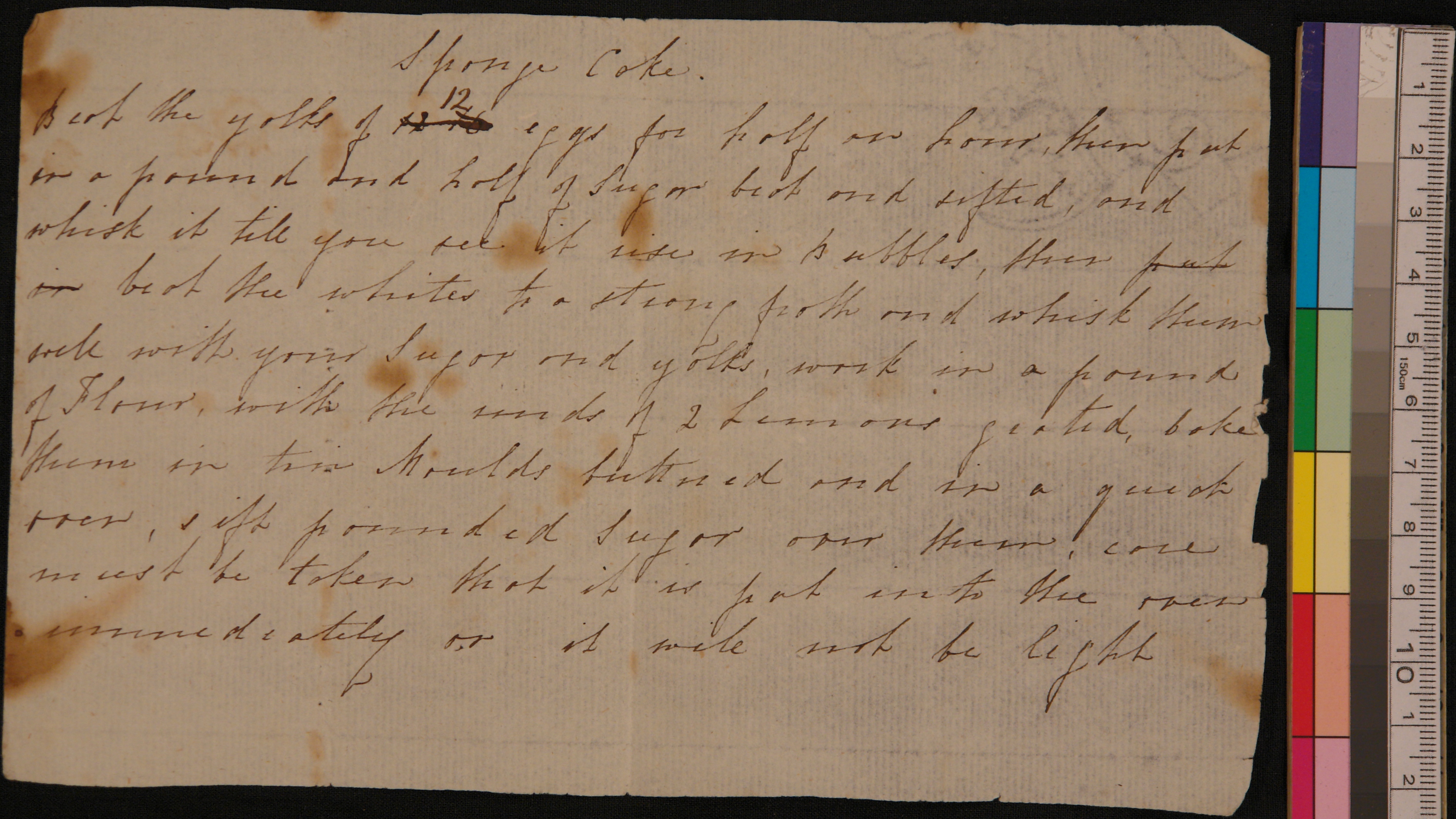

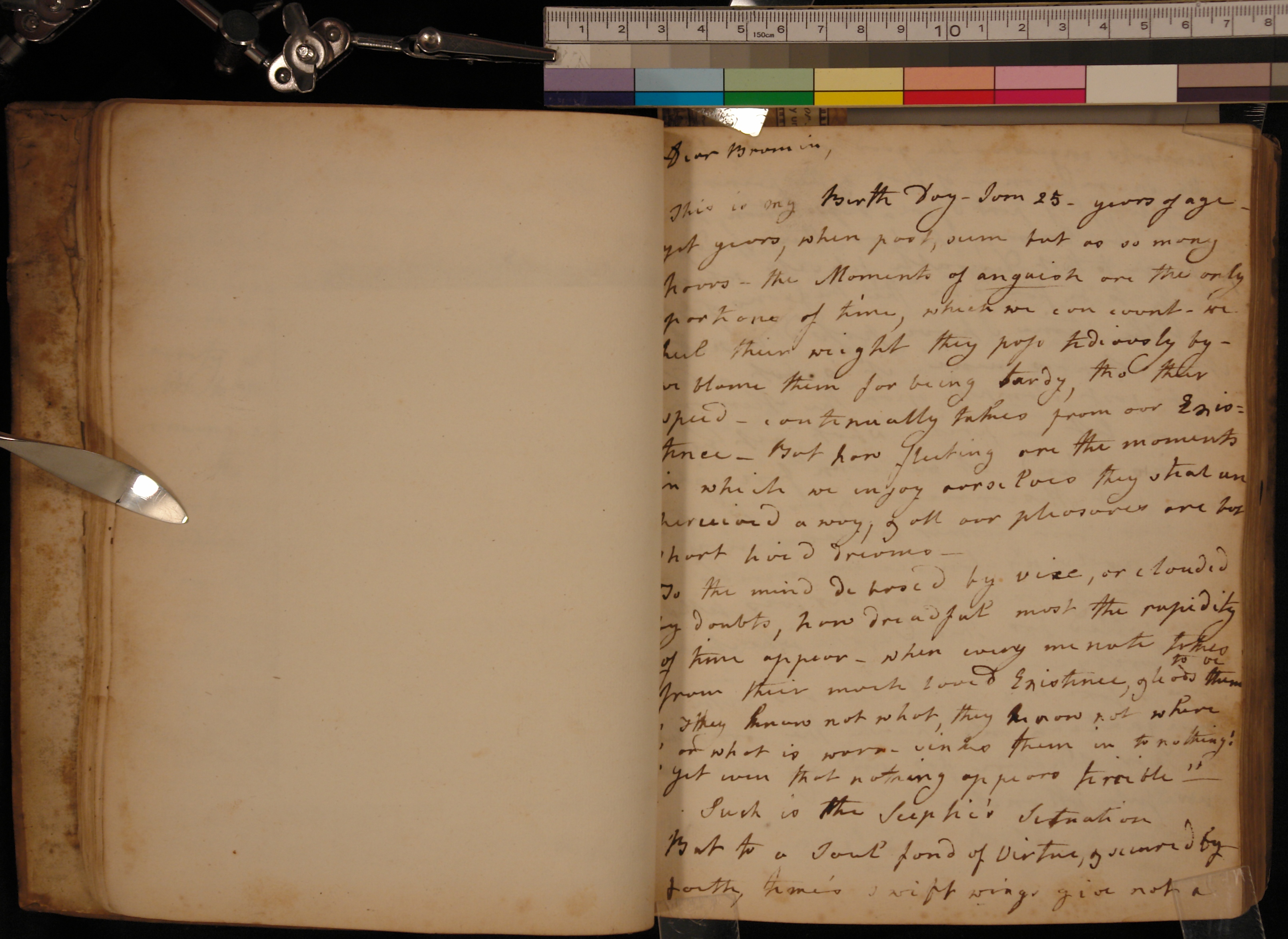
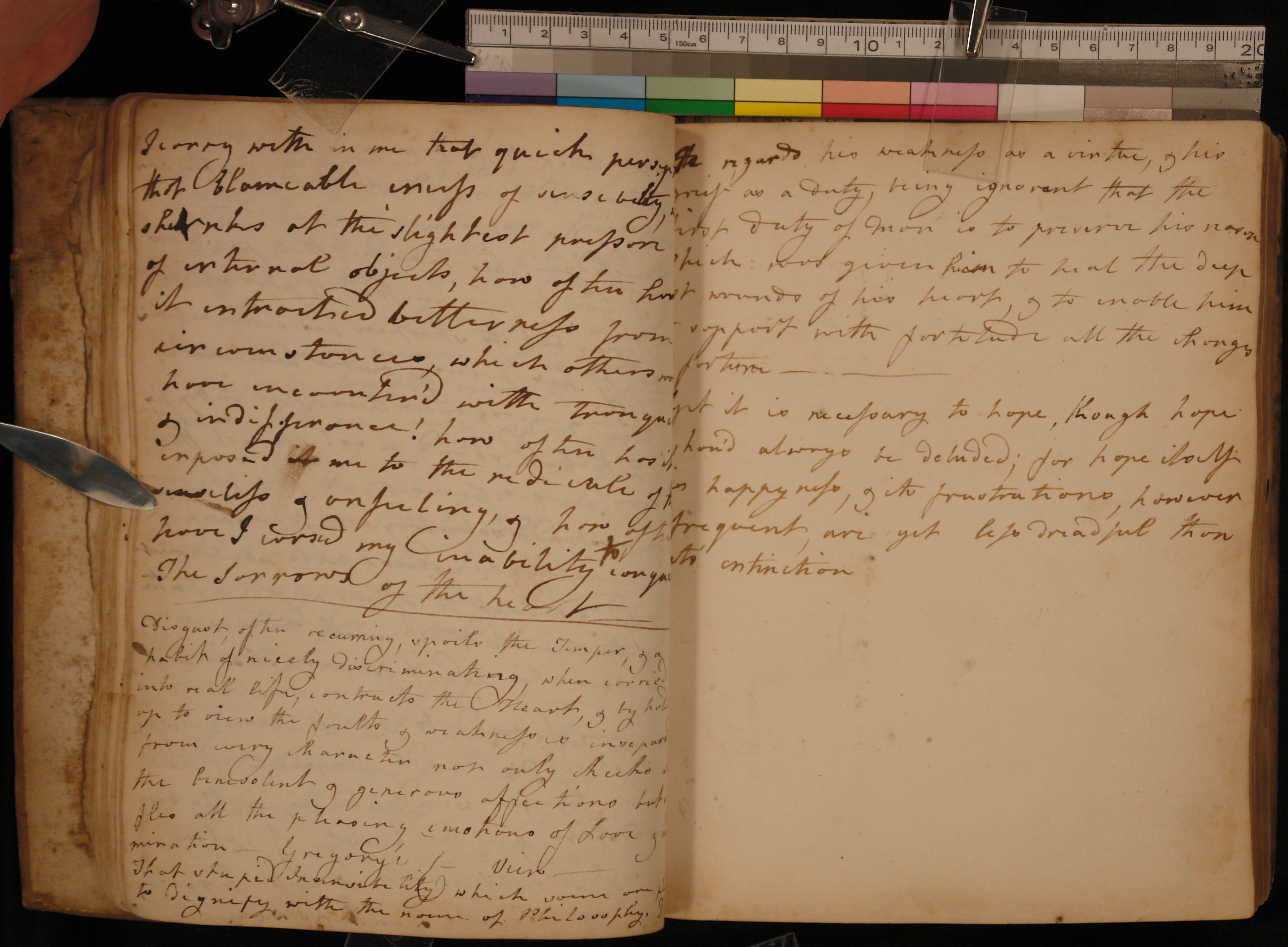
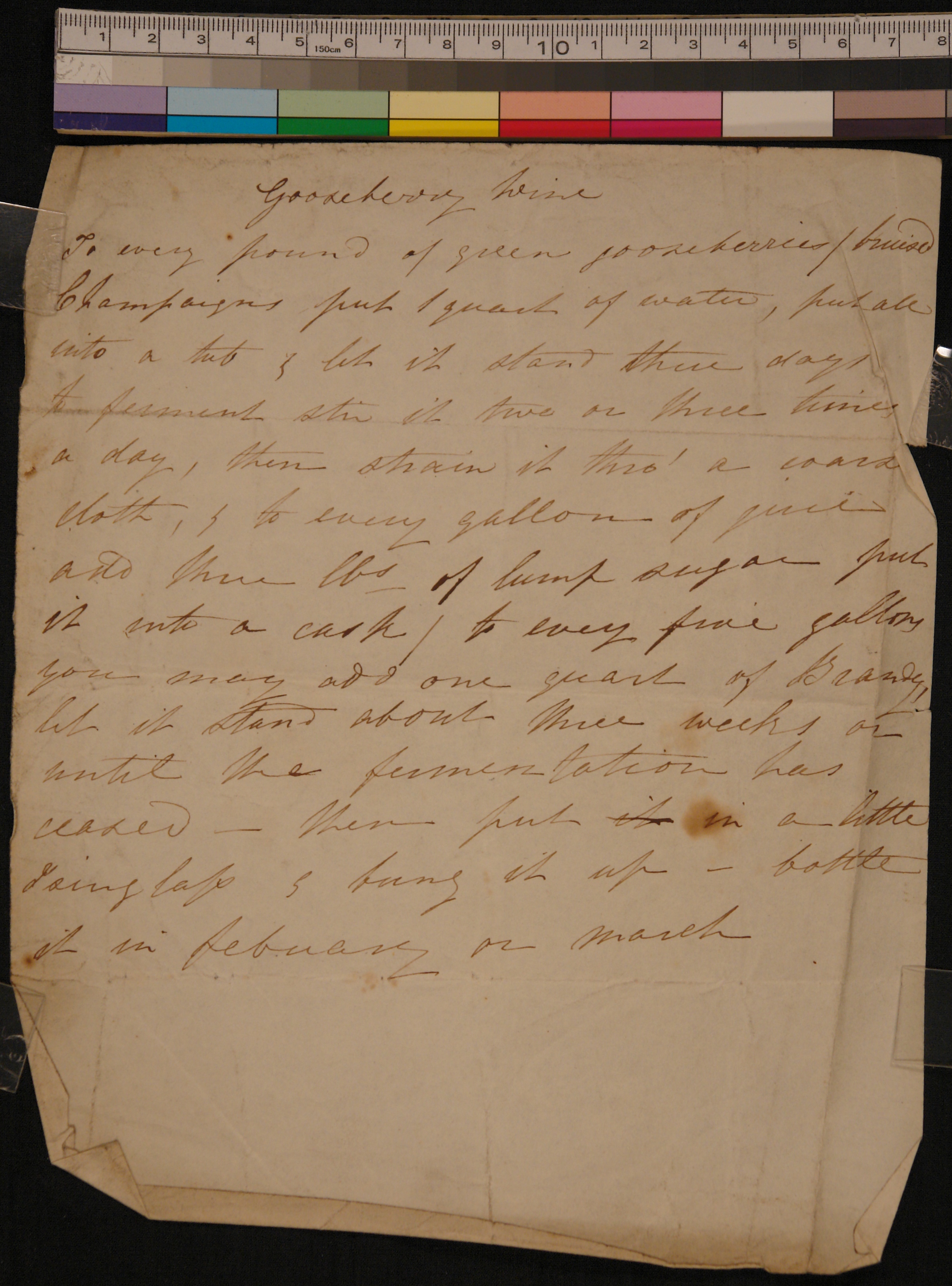
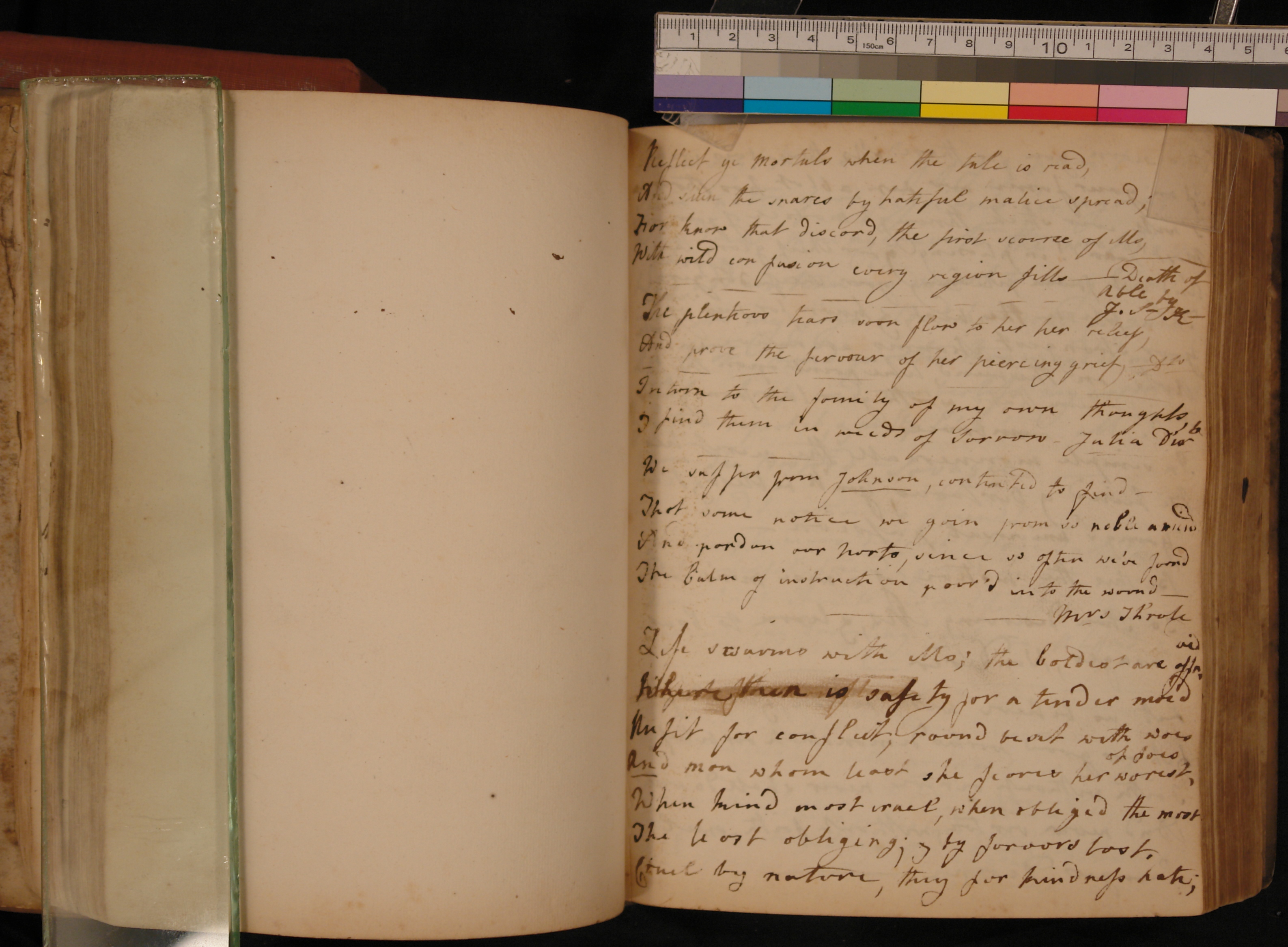
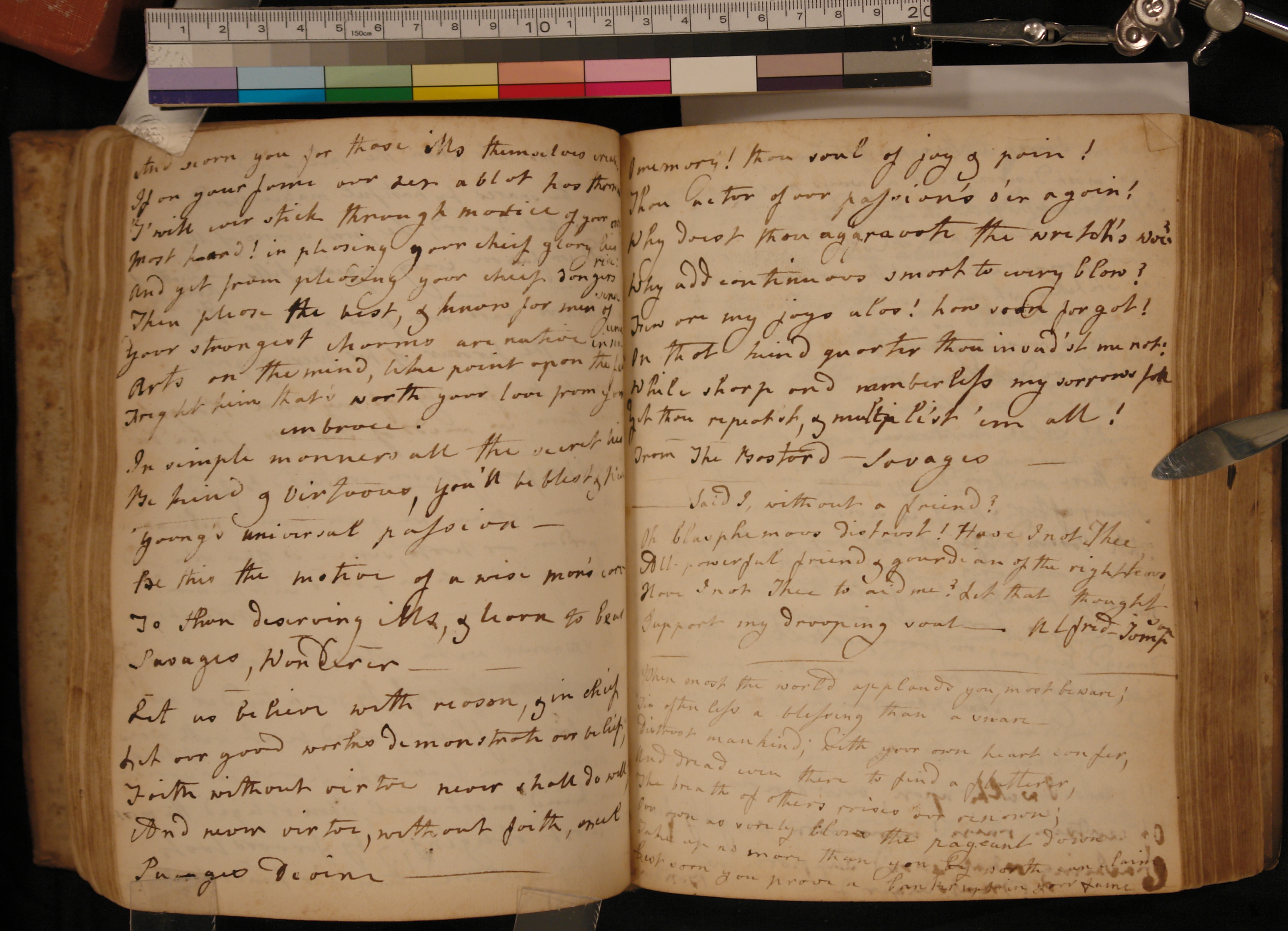

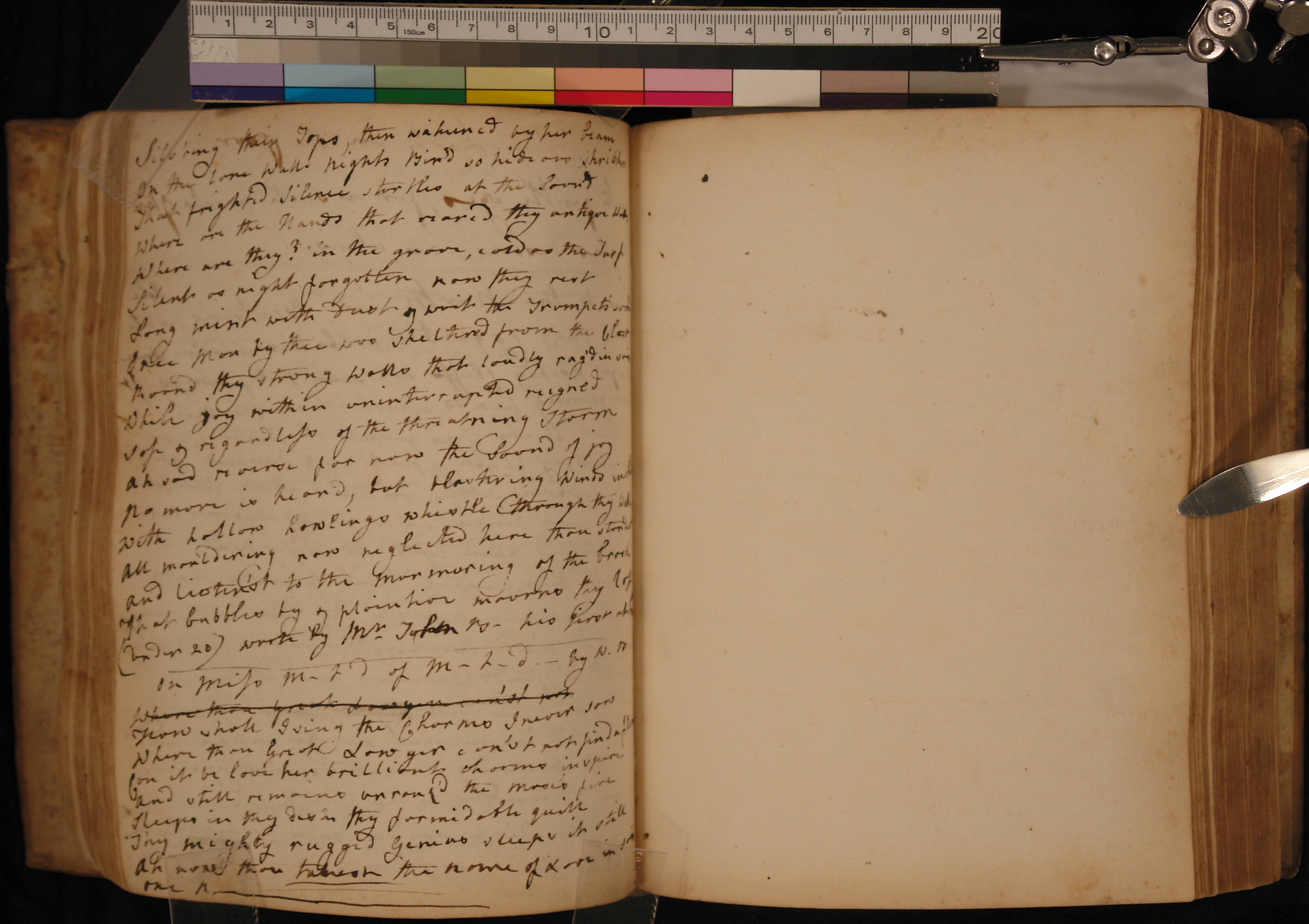
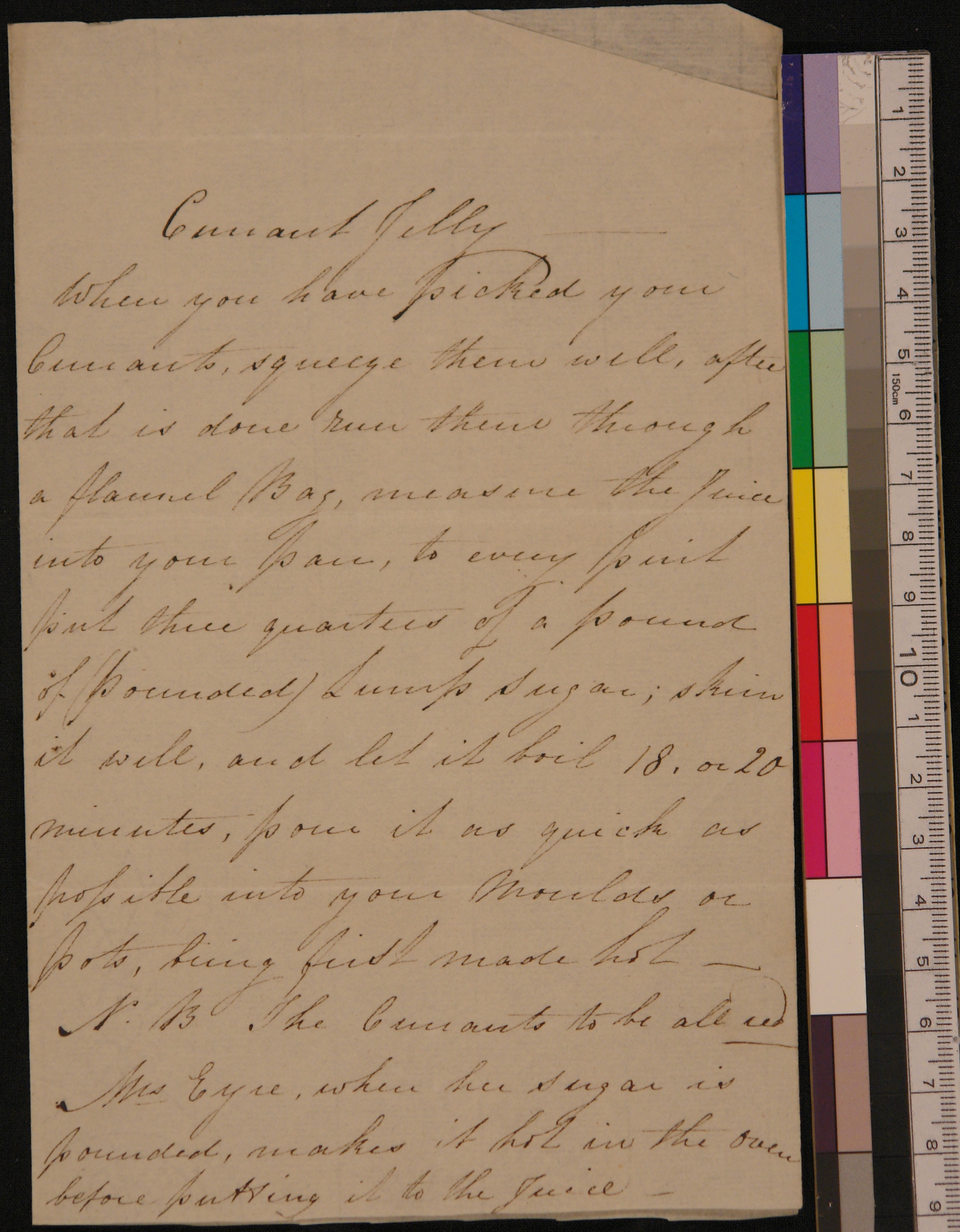
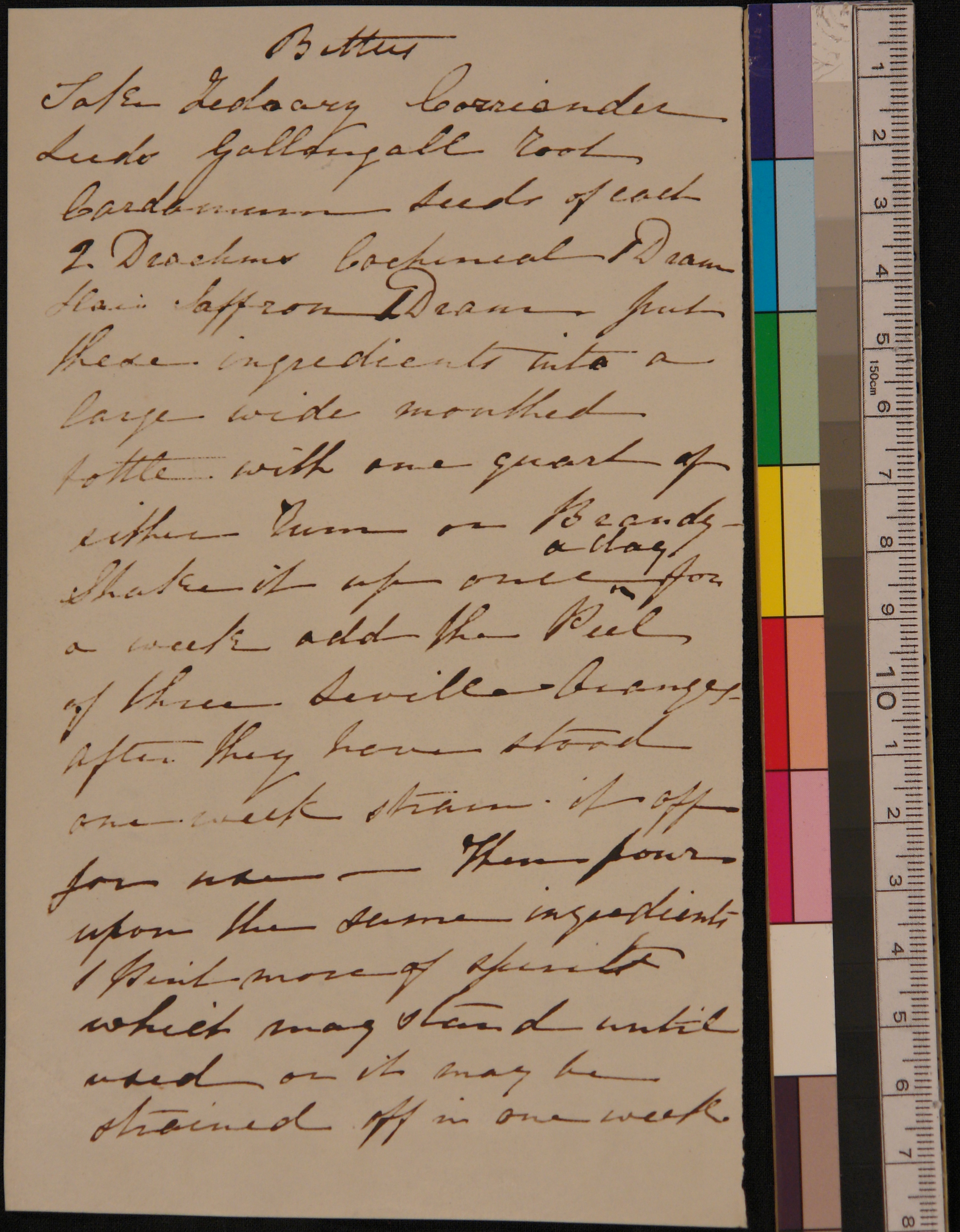
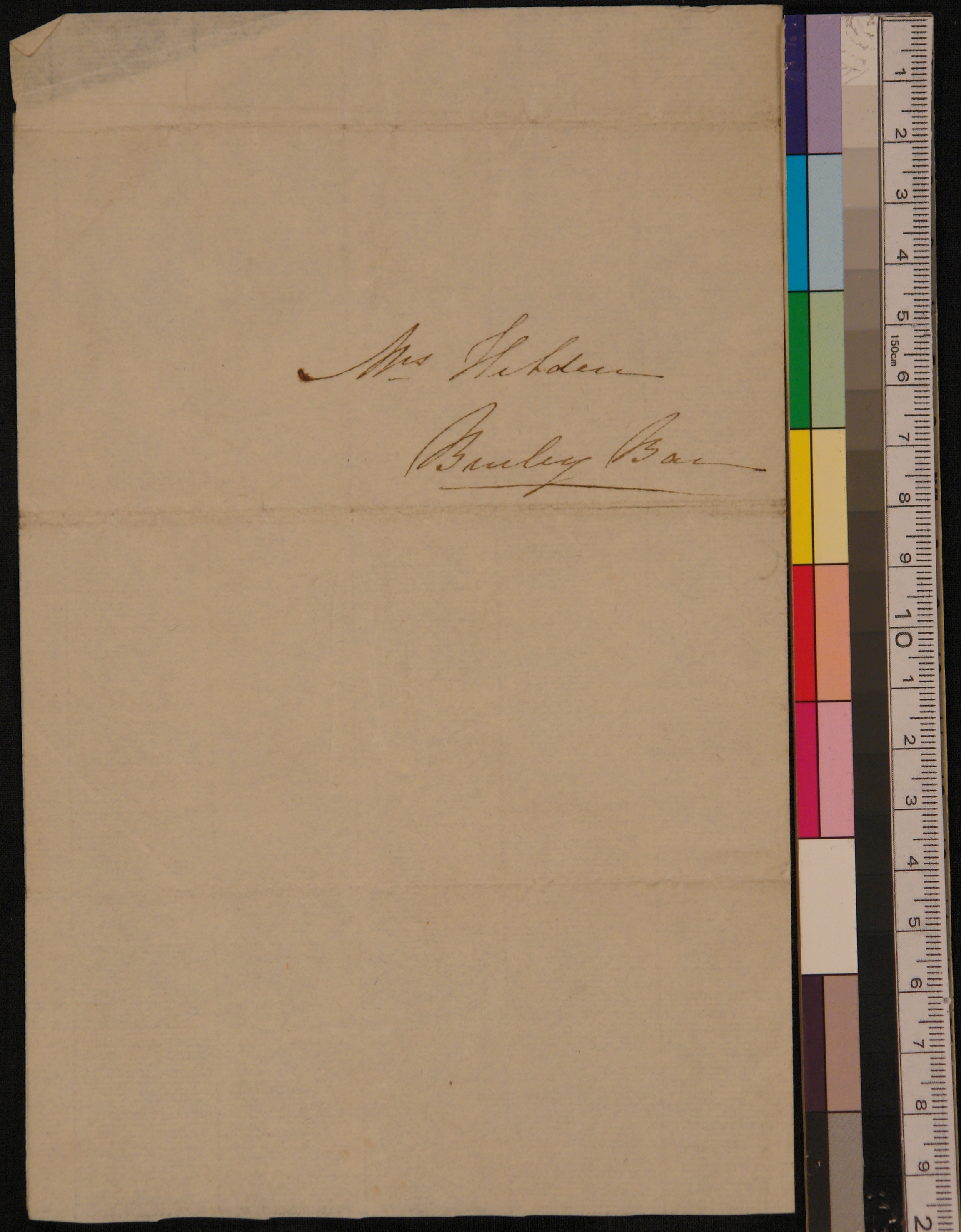
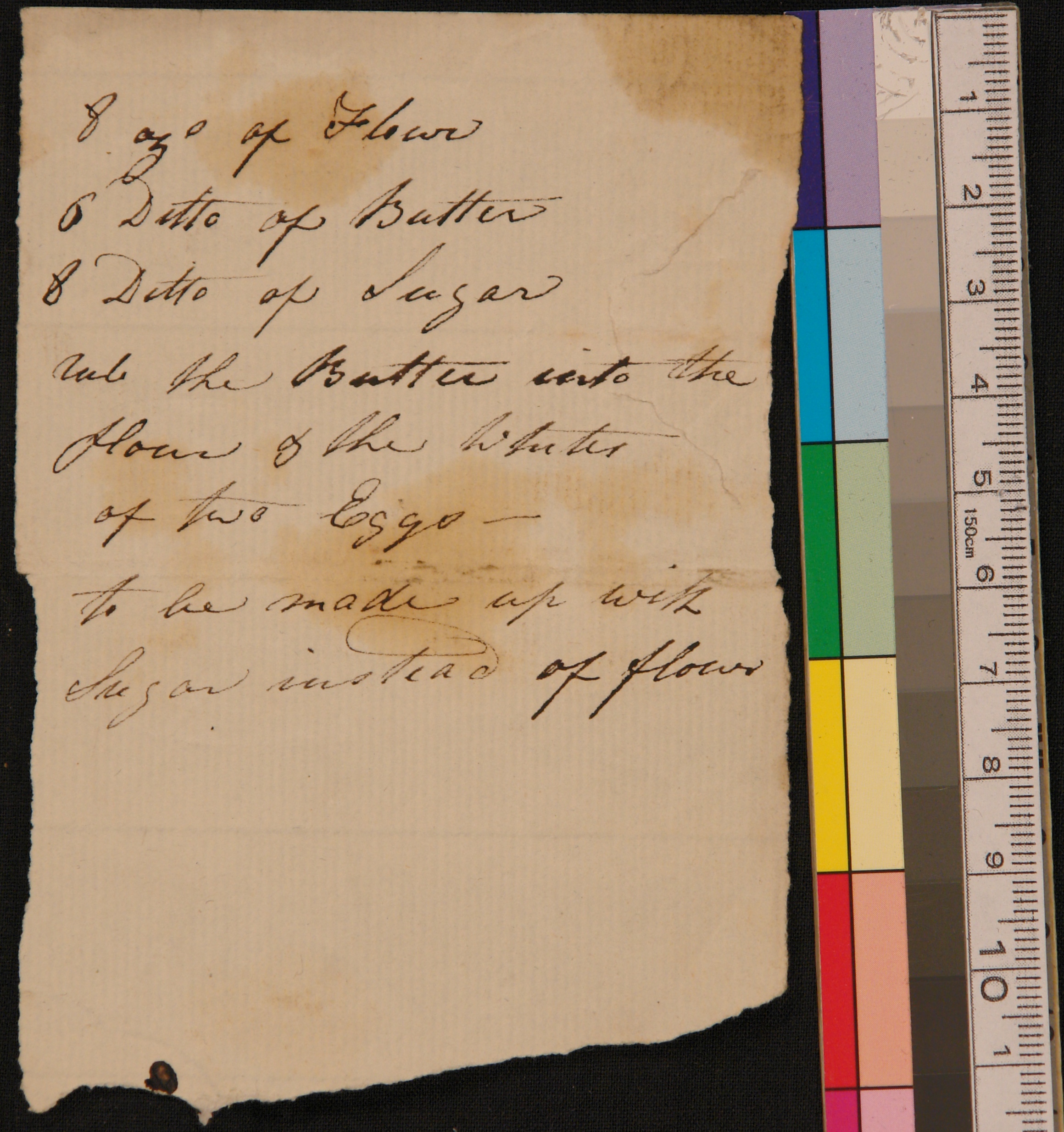
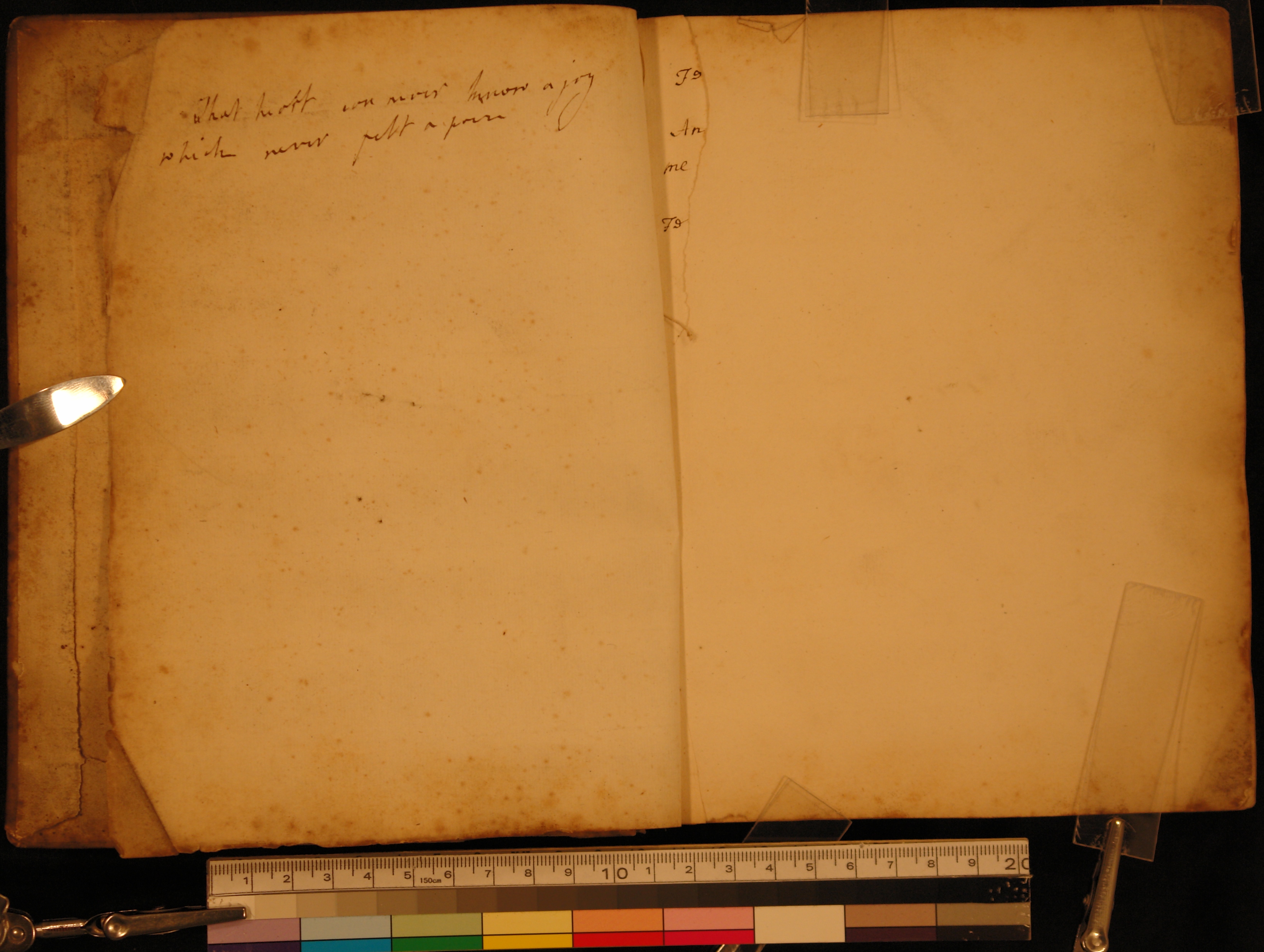
The "Philadelphia Revely" Commonplace Book Imaging
This 21 by 16 cm. codex originally contained 213 leaves of unlined, laid (hand-made) paper, bound in vellum. Leaf 212 was cut out, leaving a stub bearing traces of manuscript. In addition, portions of leaves 13 and 14 also have been cut out, apparently to remove part of the literary passage they contain. The earliest nine leaves contain manuscript recipes and cures. Following the recipes, in two separate sections of the codex, are 15 leaves containing transcriptions of excerpts from prose and poetry, most of which are taken from works by identifiable authors. In addition to the bound pages, the book also contains six inserted leaves containing recipes in other hands, some endorsed (e.g., "Mrs. Ash"). Because most surviving manuscript cookbooks from this and later eras contain nothing but "receipts," and this book contains rather more excerpts from literature than recipes and cures, it has been called a "commonplace book." All the contents testify to the "taste" or aesthetic and intellectual appreciation of the mind(s) which selected and copied the contents.
The signature on the front and back paste-downs, "Philadelphia Revely," is the name of the mother of Hugh Smithson, first Duke of Northumberland, and the grandmother of James Macie Smithson, whose bequest founded the Smithsonian Institution, Washington, D.C. Based on the first edition publication dates of the literature transcribed on leaves 11-22 and 65-67, the MS dates from sometime after 1730-87. Revely, herself, because she died in 1764, cannot be the scribe who recorded the literary excerpts, the first leaf of which (11v) comes from Samuel Johnson's "Life of Dryden" (Lives of the English Poets, 1779-81. She may have recorded some or all of the recipes on ll. 1-9. The earliest datable recipe is ""Dr. Ward's Receipt for a sore throat" (l. 10r), which was published at least twice in 1762, two years before her death, in texts identical to the MS transcription. A descendant or family retainer may have received the book after her death and used its pages to record the literature excerpts. For further information on the document and the Smithson family connection, click here. If you are interested in joining the "'Philadelphia Revely' Commonplace Book Project" to study this artifact, please click here for further information.
In the image bank below, the unnumbered leaves are identified using a manuscript convention. Each leaf is considered to be numbered sequentially from the first through the last leaf, and each leaf's sides or "pages" are indicated by "r" for "recto" (right side when open) and "v" for "verso" (left side when open). Because the "flyleaves" are made of the same paper as the rest of the leaves, the first flyleaf is numbered "1" instead of being considered a binder's addition as in print bibliography.